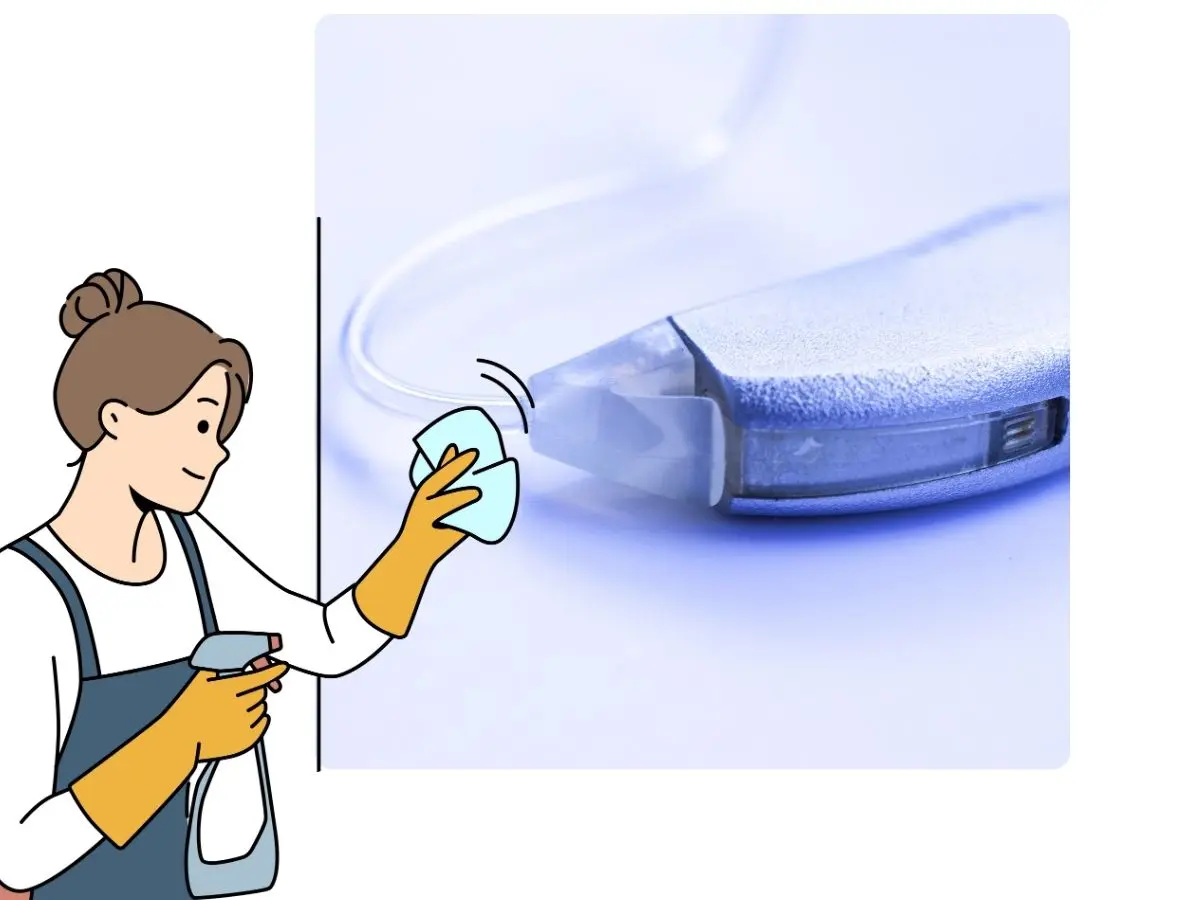Maintaining your hearing aid is essential for optimal performance and longevity. If you’re wondering how often you need to clean your hearing aid, you’re in the right place. This guide will provide you with clear and friendly advice on keeping your device in top condition.
Why Regular Cleaning is Important
Cleaning your hearing aid helps prevent wax buildup, ensures clear sound, and minimizes the risk of ear infections. Regular maintenance can also enhance the device’s performance and extend its life. For those using advanced devices like the Signia Hearing Aids, regular cleaning is vital to maintain the sophisticated technology that makes them so effective.
Hearing aids work by amplifying sound and delivering it to your ears, which means any obstruction, such as earwax, can severely affect their performance. Regular cleaning can significantly reduce issues like feedback noise and poor sound quality, ensuring you always hear clearly.
Wax buildup and moisture can also cause hardware damage over time, leading to more frequent repairs and even shortening the lifespan of your hearing aid. Thus, investing a little time each day in cleaning can save you trouble and money in the long run. You can learn more about the importance of clean hearing aids here.
How Often Should You Clean Your Hearing Aid?
For most hearing aids, a daily cleaning routine is recommended. This involves wiping the device with a soft, dry cloth each night, and using a wax pick to remove visible wax from the receiver, or speaker. Additionally, you should perform a more thorough cleaning every two to four weeks by changing your wax guard. Consistent daily maintenance will help you avoid problems related to earwax and debris blocking the microphones or speakers.
If you’re using a model like the ReSound Hearing Aids, follow the manufacturer’s specific cleaning guidelines to get the best results.
Some hearing aid models come with advanced features like IP68 certification which offers protection against dust and water. However, these features don’t eliminate the need for regular cleaning. Even waterproof models benefit from being kept clean to ensure longevity and performance.
Daily Cleaning Tips
Use a soft, dry cloth to gently wipe your hearing aid every evening. Avoid using water or cleaning agents, as these can damage the device. Make sure to remove any visible earwax or debris. You might find it helpful to keep a small toolkit close by that includes items specifically designed for hearing aid maintenance.
For devices like Silk Charge&Go hearing aids, ensure you’re routinely changing the wax guards to prevent ear wax from fouling the interior components.
Storing your hearing aids in a dry, cool place at night is just as important as cleaning them. If you live in a particularly humid climate or are experiencing a hot summer, consider investing in a hearing aid dehumidifier. Learn more about maintaining hearing aids during hot weather here.
Weekly Maintenance Routine
Once a week, take extra steps to clean your hearing aid thoroughly. Use a small brush or the cleaning tools provided by your hearing care professional to remove wax from the microphone and receiver. Check the tubing for any blockages and replace wax guards if necessary.
Advanced cleaning techniques can be indispensable. For instance, using professional-grade tools for wax removal can prevent any damage that DIY methods might cause.
Weekly cleaning should also include examining your hearing aids for any signs of wear and tear. Check for any cracks, frayed wires, or other issues that might affect performance. Address any problems immediately by consulting your hearing care provider.
When to Visit a Professional
Schedule regular visits to your hearing care provider for professional cleanings and check-ups. They can deep-clean your device, make necessary adjustments, and ensure it’s functioning correctly. Typically, a professional cleaning should be done every six months.
Professional cleanings might also be the time to update or upgrade your hearing aids if you’ve had them for several years. Hearing aid technology continually evolves, offering new features and better sound quality. If your current device isn’t meeting your needs, it might be time to look into newer models like those offered by ReSound.
Regular check-ups with your specialist can also provide opportunities to recalibrate your hearing aids for optimal performance, ensuring they continue to meet your hearing needs effectively.
Signs Your Hearing Aid Needs Cleaning
If you notice a decline in sound quality, difficulty hearing, or any strange noises, it might be time to clean your hearing aid. Consistent cleaning can help avoid these issues and keep your hearing aid in good working order.
Other indicators that your hearing aid needs attention include difficulty understanding speech in noisy environments or overall volume drops. These signs often mean that parts of your hearing aid are blocked by earwax or debris that requires thorough cleaning.
Ignoring these signs can lead to worse hearing performance and potentially more severe issues down the line. Pay attention to any changes in how your hearing aids are working and address them promptly.
Additional Hearing Aid Care Tips
Store your hearing aid in a safe, dry place when not in use. Avoid exposure to extreme temperatures or moisture. Always handle the device with clean, dry hands to prevent damage.
If you’re involved in physical activities or live in a hot climate, consider measures for sweat protection. Products like moisture-resistant sleeves can provide an added layer of protection, keeping your hearing aids in optimal condition.
For newcomers to hearing aids, getting used to the new routine might seem overwhelming. Tips on acclimating to your new devices can be invaluable. Check out six tips for getting used to your new hearing aids to ease the transition.
Takeaway
Cleaning your hearing aid regularly can make a significant difference in its performance and lifespan. By following the tips and guidelines provided here, you’ll ensure your hearing aid continues to support you effectively. Remember, a little daily care can go a long way in maintaining the quality of your hearing aid.


